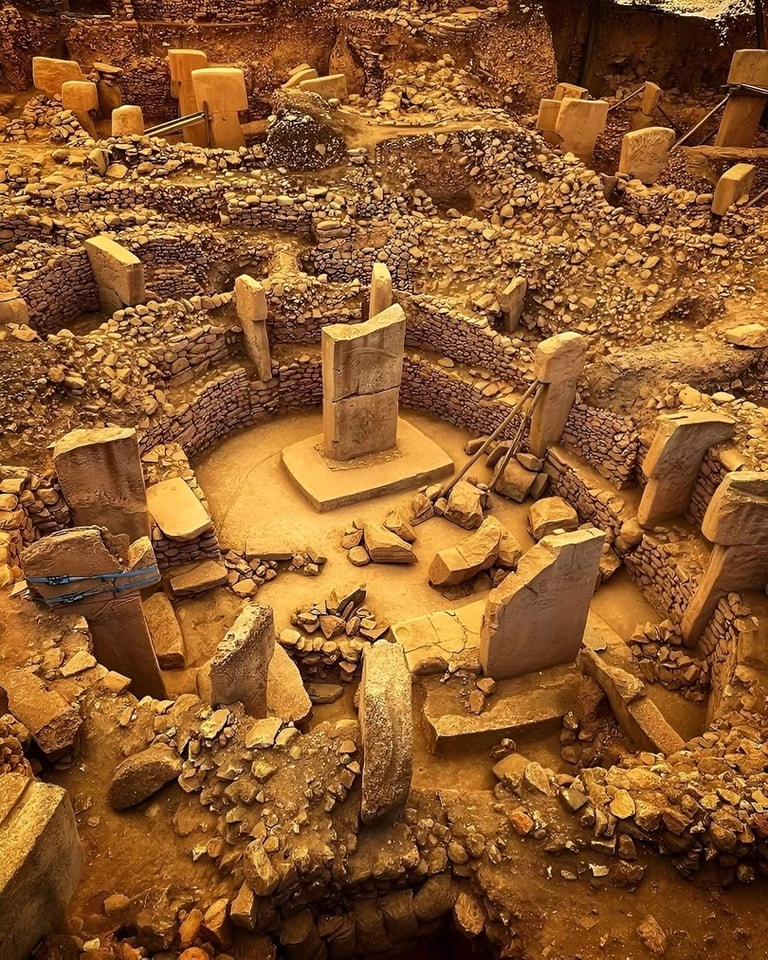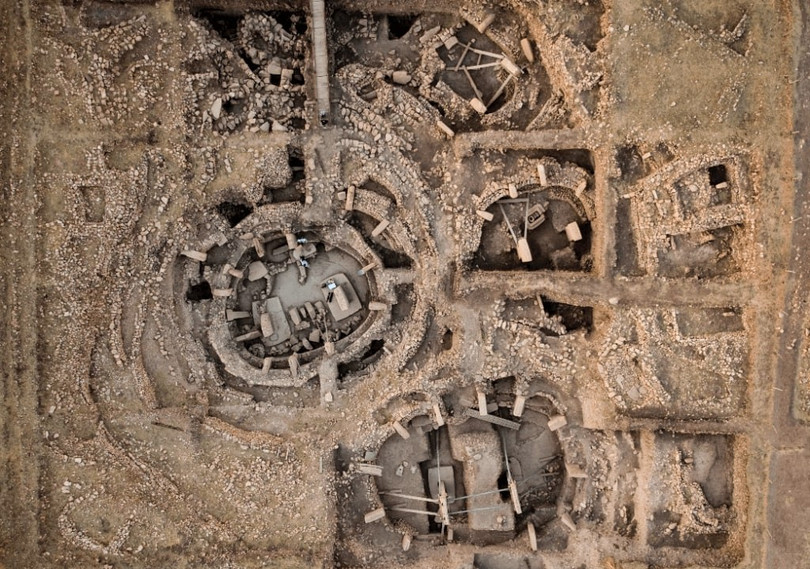Table of Contents
ToggleGöbekli Tepe – The Oldest Monumental Structure on Earth
Göbekli Tepe, located in southeastern Turkey, stands as one of the most significant archaeological discoveries in human history. With an age surpassing 10,000 years, it predates even the advent of agriculture and cities. This site is not only a testament to the ingenuity of our ancestors but also a window into the spiritual and social fabric of early human societies.
Historical Context – Pre-Pottery Neolithic Beginnings
Dating back to approximately 9600–9500 BCE, Göbekli Tepe belongs to the Pre-Pottery Neolithic period. This era marks a time before humans developed pottery or domesticated crops on a large scale. Its very existence challenges long-held beliefs that monumental architecture arose only after agriculture established sedentary lifestyles.
A New Perspective on Early Civilization
Göbekli Tepe overturns traditional narratives of human progress. Previously, historians believed that complex societies emerged after farming, with surplus food enabling specialization and monumental projects. However, Göbekli Tepe’s builders were likely hunter-gatherers, demonstrating that spiritual or communal needs might have driven early societal organization.
Architectural Marvels – What Makes Göbekli Tepe Unique?
Monumental Pillars and Their Purpose
The site comprises massive stone pillars, some standing 6 meters tall and weighing up to 10 tons. Arranged in circular or oval shapes, these structures likely served as gathering places for communal rituals. Intriguingly, no evidence of domestic activities has been found, reinforcing its role as a ceremonial or religious center.
Intricate Carvings and Symbolism
The pillars are adorned with carvings of animals such as lions, foxes, snakes, and birds. These images are not merely decorative but appear to hold symbolic significance, potentially representing deities, myths, or clan emblems. The absence of writing forces archaeologists to interpret these carvings through comparative anthropology and symbolism.

Societal Implications – What Can We Learn from Göbekli Tepe?
Collaboration and Labor Organization
The construction of Göbekli Tepe required advanced planning, a coordinated workforce, and the ability to transport and carve massive stones without modern tools. This suggests a degree of societal complexity previously thought impossible for hunter-gatherer communities.
Religious Motivation as a Catalyst for Civilization
Göbekli Tepe indicates that shared religious or ceremonial purposes might have driven early human groups to cooperate and build lasting structures. This challenges the notion that economic needs alone spurred societal development.

The Mystery of Its Abandonment
Göbekli Tepe was deliberately buried around 8000 BCE, a mystery that continues to puzzle archaeologists. The intentional backfilling may have been an act of reverence, a way to preserve its sanctity, or simply a practical decision to move on to other sites.
Ongoing Discoveries and Modern Relevance
Excavations at Göbekli Tepe began in the 1990s under the leadership of Klaus Schmidt and continue to this day. Each discovery reshapes our understanding of early human history. Recognized as a UNESCO World Heritage Site in 2018, it attracts researchers and tourists alike, eager to connect with humanity’s deep past.
Conclusion – The Legacy of Göbekli Tepe
Göbekli Tepe không chỉ là di tích của quá khứ; nó là ngọn hải đăng soi sáng nguồn gốc của sự khéo léo, hệ thống niềm tin và tổ chức xã hội của con người. Khi các cuộc khai quật tiếp tục, nó nhắc nhở chúng ta rằng gốc rễ của nền văn minh sâu xa hơn—và phức tạp hơn nhiều—so với chúng ta từng tưởng tượng. Kỳ quan cổ đại này mời gọi chúng ta suy nghĩ lại về nguồn gốc của nền văn hóa loài người và hành trình bền bỉ của chúng ta để tìm kiếm ý nghĩa và sự kết nối.
